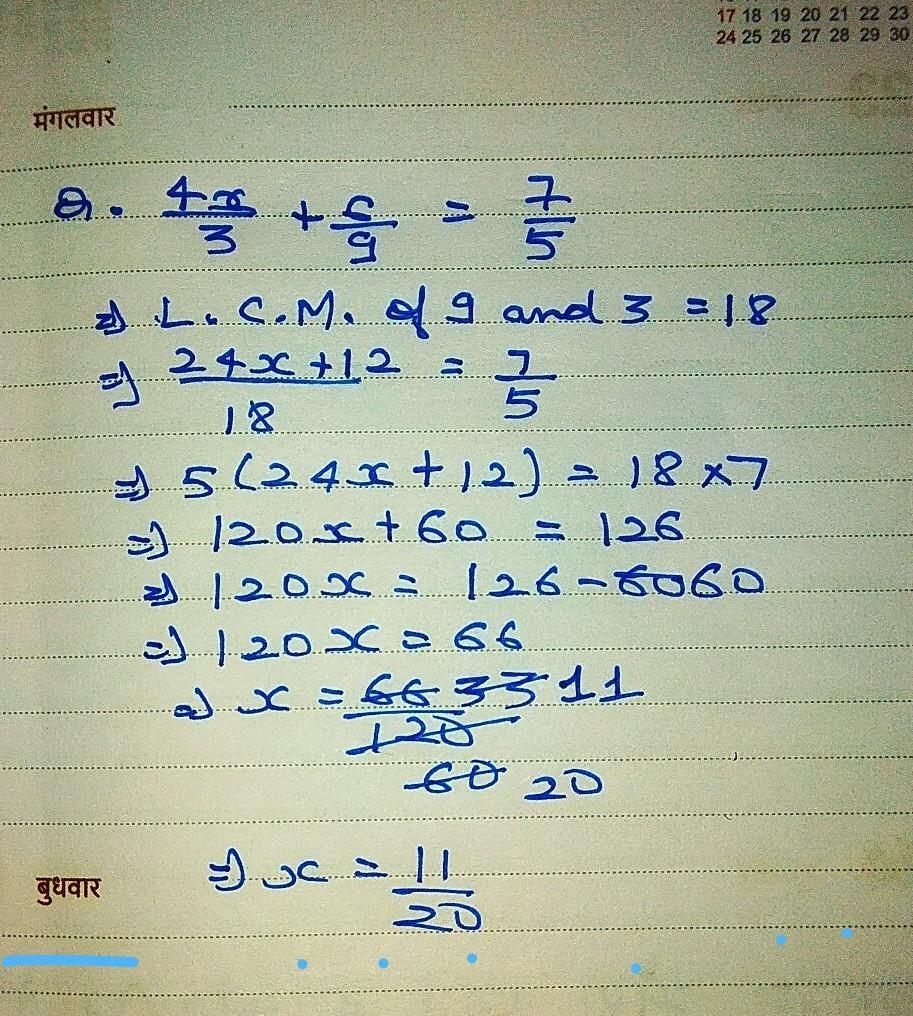Answers 2
Answer:
refer to it
Step-by-step explanation:
refer please

-
Author:
oriolfxcs
-
Rate an answer:
9
Answer: The value of [tex]x[/tex] in the given equation [tex]\frac{4x}{3} + \frac{6}{9} = \frac{7}{5}[/tex] is [tex]\frac{11}{20}[/tex]
Step-by-step explanation: Given equation is [tex]\frac{4x}{3} + \frac{6}{9} = \frac{7}{5}[/tex]
To find: The value of [tex]x[/tex]
Solution: In the given equation
[tex]\frac{4x}{3} + \frac{6}{9} = \frac{7}{5}[/tex]
Subtracting [tex]\frac{6}{9}[/tex] on the right hand side and left hand side of the equation
[tex]\frac{4x}{3} + \frac{6}{9}-\frac{6}{9} = \frac{7}{5}-\frac{6}{9}[/tex]
[tex]\frac{4x}{3} = \frac{7}{5} - \frac{6}{9}[/tex]
Now,
Considering the least common multiple of the denominators on the right hand side i.e., 5 and 9
The LCM of 5 and 9 is 45
So, we have,
[tex]\frac{4x}{3} = \frac{(7*9) - (6*5)}{45}[/tex]
[tex]\frac{4x}{3} = \frac{63 - 30}{45}[/tex]
[tex]\frac{4x}{3} = \frac{33}{45}[/tex]
Reducing to lowest term
[tex]\frac{4x}{3} = \frac{11}{15}[/tex]
Now, multiplying 3 on both the sides and dividing 4 on both the sides, we will get
[tex]\frac{4x}{3}*(\frac{3}{4}) = \frac{3*11}{4*15}[/tex]
[tex]x= \frac{11}{20}[/tex]
Therefore, the value of [tex]x[/tex] in the given equation [tex]\frac{4x}{3} + \frac{6}{9} = \frac{7}{5}[/tex] is [tex]\frac{11}{20}[/tex]
-
Author:
babe1swc
-
Rate an answer:
13
